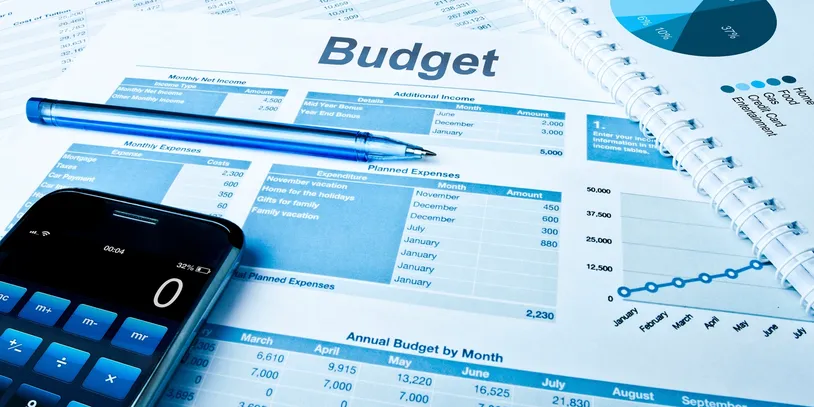Why is a reserve fund essential for financial stability? In an ever-changing world, understanding the importance of a contingency fund can make all the difference when unexpected financial challenges arise. Whether for individuals, businesses, or governments, having a security fund is akin to having a financial safety net, poised to stabilize operations and instill confidence in the face of unforeseen events. This article explores the significance of reserve funds, how they are structured, and why they are an integral part of sound financial planning.
Defining a Reserve Fund

Before we delve into the specifics, it’s important to define what a reserve fund is. A reserve fund is a pool of money set aside to meet unexpected costs or obligations. It acts as a cushion that can absorb shocks, such as a sudden loss of income or a major unexpected expenditure. For businesses, reserve funds can mitigate the risks of cash flow disruptions, while for individuals, they can provide peace of mind in the event of emergencies like medical expenses or job loss.
The Structure of a Reserve Fund
Understanding how reserve funds are structured can offer insights into their effective management. Typically, reserve funds are characterized by their liquidity and accessibility. The money is often kept in easily accessible accounts to ensure it can be used whenever needed.
| Type of Reserve | Typical Use | Benefits |
|---|---|---|
| Personal Emergency Fund | Unexpected personal expenses | Financial security |
| Business Operational Reserve | Operational costs and payroll | Business stability |
| Government Surplus Fund | Public projects/deficit reduction | Economic stability |
| HOA Reserve Fund | Community maintenance | Community enhancements |
These funds are usually maintained as a percentage of income or budget, depending on the specific needs and goals of an individual, business, or institution. It’s vital to assess and adjust the amount regularly to align with changing financial landscapes.
Setting Up a Personal Reserve Fund

Personal reserve funds, commonly known as emergency funds, are designed to cover living expenses for a period, usually three to six months, in case of emergencies. Setting up a fund requires a systematic approach. Start small, aiming to save a modest amount monthly until you reach a larger goal. Consistency is key, and even small contributions add up over time. Keep the funds in a separate account to avoid the temptation of spending them on non-emergency expenses.
“Do not save what is left after spending; instead spend what is left after saving.” – Warren Buffett
The Role of Reserve Funds in Business Continuity
For businesses, reserve funds are essential in ensuring continuity during periods of uncertainty. They allow companies to cover operational costs even when revenue drops. This ensures that the business can withstand periods of financial instability without resorting to drastic measures such as layoffs or cutting corners on product quality. Reserve funds in business often cover short-term liabilities and help in capitalizing on sudden opportunities without taking on debt.
The Significance of Reserve Funds for Governments
On a larger scale, governments use reserve funds to stabilize economies. These funds provide a financial buffer that allows governments to maintain public services and invest in infrastructure projects even when tax revenues decline or unexpected expenditures arise. By having substantial reserve funds, governments can mitigate the impact of economic downturns, ensuring stability and public confidence.
Challenges in Maintaining Reserve Funds

While the benefits of reserve funds are numerous, maintaining them can pose challenges. Economic conditions, inflation, and competing financial priorities can impact the ability to keep these funds at recommended levels. For individuals, lifestyle inflation and changing personal circumstances may lead to underfunded reserves. Similarly, businesses might face pressure to invest cash in growth initiatives rather than reserving it for a potential downturn. Addressing these challenges requires discipline and strategic financial planning.
Strategic Planning for Reserve Funds
The management and strategic planning of reserve funds involve careful analysis of risk vs. return. The goal is to have a balance that maximizes interest earnings while ensuring liquidity. Regular reviews and adjustments to the fund based on shifts in economic conditions, income streams, or financial goals are essential. For both individuals and businesses, periodic reviews of the reserve fund levels help in adapting strategies to maintain optimal fund levels.
1- Establish a clear reserve fund goal.
2- Monitor and reassess regularly.
3- Balance liquidity and yield through diversified investments.
Common Misconceptions About Reserve Funds
Despite their benefits, reserve funds are often misunderstood. Some believe they are unnecessary if one has access to credit; however, relying on credit can lead to debt spirals. Others might think that reserve funds hinder potential growth by tying up money that could be invested elsewhere. In reality, a reserve fund underpins financial health and provides the flexibility needed to take advantage of new opportunities without risking financial stability.
The Role of Technology in Managing Reserve Funds
In today’s digital age, technology plays a crucial role in managing reserve funds. Automated savings plans and apps that track and encourage saving make it easier than ever to maintain and manage a fund. Financial institutions offer tools that provide insights into saving patterns and help in forecasting future needs. These innovations ease the process, ensuring reserve funds remain an integral part of financial strategies.
FAQ – Common Doubts
What is an ideal size for an emergency fund?
Generally, it’s advisable to have three to six months’ worth of living expenses saved in your emergency fund. This provides a sufficient buffer to cover unexpected costs.
How often should business reserve funds be reviewed?
Business reserve funds should be reviewed quarterly to ensure they align with current economic conditions and business operations.
Can reserve funds be invested?
Yes, reserve funds can be invested in low-risk assets to earn returns, but liquidity must be maintained to ensure funds are available when needed.
Why can’t one rely solely on credit instead of reserve funds?
Credit involves borrowing money, which adds debt and interest payments to existing financial obligations, potentially exacerbating financial issues.
How do technological advancements aid in managing reserve funds?
Technology facilitates automated savings, provides tracking and insights, and offers financial planning tools to efficiently grow and manage reserve funds.
Is it ever too late to start a reserve fund?
No, it’s never too late. Starting the process at any stage can still provide valuable financial security and peace of mind.
Conclusion
In conclusion, reserve funds play an indispensable role in fostering financial stability for individuals, businesses, and governments alike. They provide the security to navigate crises and capitalize on opportunities without jeopardizing financial well-being. With careful planning, consistent contributions, and strategic management, a reserve fund strengthens one’s financial foundation, ensuring stability and resilience in a fluctuating economic landscape. Embracing the discipline of maintaining a reserve fund is a proactive step towards sustainable financial health.


